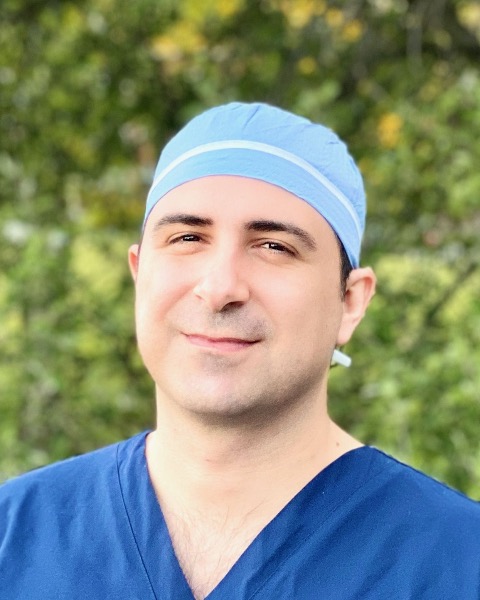Tumor
Trends and Surgical Outcomes for Skull Base Chondrosarcoma: Results from a Multicenter Registry across High-Volume US institutions
Trends and Surgical Outcomes for Skull Base Chondrosarcoma: Results from a Multicenter Registry Across High-volume US Institutions

Georgios A. Zenonos, MD
Attending Neurosurgeon
UPMC Neurosurgery
PIttsburgh, Pennsylvania, United States
Presenting Author(s)
Introduction: Resection remains the mainstay of treatment for skull base chondrosarcomas (SBCS). Endoscopic endonasal surgery (EES) has become dominant in the treatment paradigms adopted by most high-volume centers. Nonetheless, there is a relative scarcity of data to reflect the current surgical trends and outcomes for SBCSs.
Methods: A multicenter SBC registry of three high-volume institutions was compiled under approved IRBs and data sharing agreements. Data spanning the time period of 1983 to 2022 were queried and analyzed.
Results: 218 surgeries were performed on 149 patients. EES constituted 49.4% of surgeries, open approaches 39.1%, and combined 11.5%. Over time there was an increasing trend in EES utilization across all institutions (p < 0.001) Overall, GTR was possible in 42.2% of cases, with no difference between initial and subsequent surgeries (p=0.23). GTR was associated with significantly longer PFS in grade 2 tumors without radiation (p=0.022; mean PFS time 201.3 vs. 31.7 months), rendering it comparable to STR with adjuvant radiotherapy (p=0.227). In Grade 1 tumors, while there was a PFS trend favoring GTR, this did not reach statistical significance (p=0.179). EES was associated with higher GTR rates with involvement of the clivus (p < 0.0001; OR 3.47), temporal bone/petrous apex (p=0.0177; OR 1.68), Meckel’s cave (p=0.006; OR 2.45), cavernous sinus (p=0.009; OR 2.23) and ICA (p=0.0011, OR 2.31). Fewer complications were observed in the EES group compared to open (p=0.02, OR 0.37) or combined approaches (p=0.03, OR=0.22). No difference in complications was noted between initial and revision surgeries (p=0.414).
Conclusion : EES has become increasingly utilized in the treatment of SBCS at high volume institutions and can be associated with better GTR rates in specific anatomic areas while affording a lower rate of complications. The impact of GTR on PFS is of particular importance in conventional grade 2 tumors, obviating the need for adjuvant radiotherapy.
Methods: A multicenter SBC registry of three high-volume institutions was compiled under approved IRBs and data sharing agreements. Data spanning the time period of 1983 to 2022 were queried and analyzed.
Results: 218 surgeries were performed on 149 patients. EES constituted 49.4% of surgeries, open approaches 39.1%, and combined 11.5%. Over time there was an increasing trend in EES utilization across all institutions (p < 0.001) Overall, GTR was possible in 42.2% of cases, with no difference between initial and subsequent surgeries (p=0.23). GTR was associated with significantly longer PFS in grade 2 tumors without radiation (p=0.022; mean PFS time 201.3 vs. 31.7 months), rendering it comparable to STR with adjuvant radiotherapy (p=0.227). In Grade 1 tumors, while there was a PFS trend favoring GTR, this did not reach statistical significance (p=0.179). EES was associated with higher GTR rates with involvement of the clivus (p < 0.0001; OR 3.47), temporal bone/petrous apex (p=0.0177; OR 1.68), Meckel’s cave (p=0.006; OR 2.45), cavernous sinus (p=0.009; OR 2.23) and ICA (p=0.0011, OR 2.31). Fewer complications were observed in the EES group compared to open (p=0.02, OR 0.37) or combined approaches (p=0.03, OR=0.22). No difference in complications was noted between initial and revision surgeries (p=0.414).
Conclusion : EES has become increasingly utilized in the treatment of SBCS at high volume institutions and can be associated with better GTR rates in specific anatomic areas while affording a lower rate of complications. The impact of GTR on PFS is of particular importance in conventional grade 2 tumors, obviating the need for adjuvant radiotherapy.

.jpg)